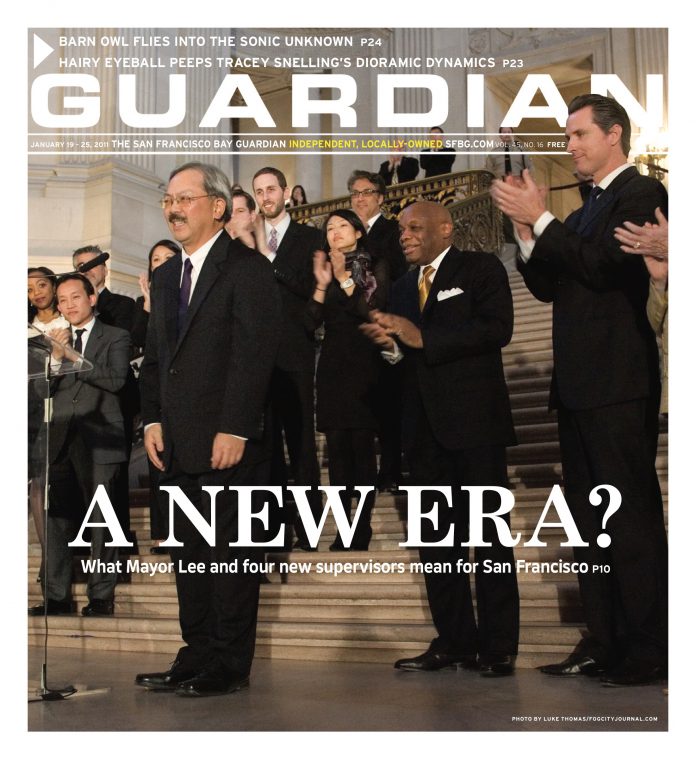arts@sfbg.com
FILM During the course of writing this review, I will at some point be ensnared by a sentence, reworking its syntax and flow across many notebook pages. For some of us, this is what writing is. When we praise commanding literary performances as great writing, we’re actually talking about reading. It’s not surprising that film portraits of artists usually only give us a mime of their craft; biography and circumscribed performance are shields from the crooked time of the creative process.
Pedro Costa made a rare “painters painting” movie of the French filmmakers Jean-Marie Straub and Danièle Huillet, and now he has done another with Jeanne Balibar. The two films trail distinct voices: Where Does Your Hidden Smile Lie? (2001) had the voluble Straub, whereas in Ne change rien Balibar speaks an obscure language of process (“Bring out the silences.” “This is fragile.”) that is outside the paltry domain of the conventional music documentary.
Costa forgoes exposition, and his stationary long takes require patience. Early on in Ne change rien, we watch Balibar work through a compact melodic phrase for more than 10 minutes. Stretched out of shape in this way, singing comes to seem distinctly of the body — equal parts athletic and spiritual exercise. Warhol’s unstinting camera is an obvious reference point for Costa’s staring-down-the-void, but while it’s true the Portuguese director doesn’t fear boredom, neither does he court it. He forgets the audience but gives us a greater taste of being for it. His tendency to black out vast portions of the frame makes a special kind of sense in Balibar’s recording studio; herein, both sound and vision register as isolated degrees of a larger frame.
Balibar’s appearance seems to change from one song to the next, and Costa’s signature shadows accentuate this disappearing act — we might call it seduction. Though the film shows us Balibar live onstage and training for opera — a different person almost — the heart of Ne change rien is in the studio, where we get to know a handful of songs as we would people (i.e., not all at once). A recording studio is not conducive to spectators; indeed, it can be difficult to remain engaged even as a participant. It is where musicians break their songs apart for the discrete elements can be recombined as a dynamic illusion of a single performance. Similarly to the Straub-Huillet portrait, Costa situates Ne change rien in an enclosed chamber of creative production while withholding the composite product assembled there.
We are left clinging to fragments, and yet the offhanded threads between shots (a repeated quip about movie sets, a cat) underscore the more resonant elucidations of the songs in construction. As Balibar circles a melody, so the tunes coil the sequences — no wonder they’ve been haunting my sleep. Late in the game of “Cinéma,” Costa cuts between guitarist Rodolphe Burger and the recording engineer listening to the full playback of the song and Balibar in a different room recording its vocal track (she hears what they do on headphones, but we hear her voice alone). This is the only time we see a piece of the outside world, and you will have to take my word that the window and her voice are one. At the end of Ne change rien, Costa cuts to the musicians in a backstage room flooded with artificial light. Graphically, the shot is the opposite of all that’s come before. The group runs through a lovely song we haven’t yet heard (“Rose”). The effortlessly unfolding time-frame of rehearsal is something new too. It looks a lot like grace.
NE CHANGE RIEN
Thurs/20, 7:30 p.m.; Sun/23, 2 p.m., $6–$8
Yerba Buena Center for the Arts
701 Mission, SF
(415) 978-2787

